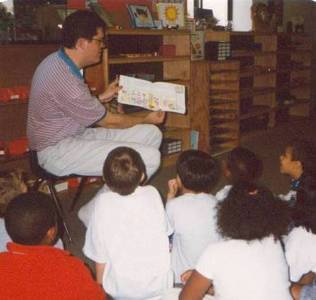No matter how long you’ve been teaching, the first day of the new school year is always a little nerve-wracking. Even if some of your students are returning, some will be new – and there will be new work for everyone. Luckily, there are some easy things that you can prepare or have one hand to make the first day (and first week) of school a little easier for everyone.
For any age classroom or at home:
* Prepare a bag with several objects in it that mean a lot to you (things from your childhood or travels are great). Show each of them to the kids and explain why they are important to you. This helps them get to know you better. Use different objects each year so that they’re new for everyone.
* Make sure you have the classroom essentials ready (besides the Montessori materials): drawing paper, scrap paper, writing paper, sharpened pencils, and clipboards.
* Prepare a simple but fun art project that can be done during the week (have this ready to go in case of unexpected downtime).
 * Keep a couple of new, interesting books on hand to read aloud. Other nice things include a new book-on-tape, a CD of fun songs, and musical instruments. If things get hairy for one or more children, have the classroom assistant or a spouse, parent, or older child read or sing with the rest of the group while you sort things out. Don’t feel like you must be in front of the group whenever the children gather together; let others share that time to help you out. (See picture: Back when I was teaching, my husband, Bruce, would sometimes come early to pick me up and read to the kids at the end of the day so I could work in the classroom!)
* Keep a couple of new, interesting books on hand to read aloud. Other nice things include a new book-on-tape, a CD of fun songs, and musical instruments. If things get hairy for one or more children, have the classroom assistant or a spouse, parent, or older child read or sing with the rest of the group while you sort things out. Don’t feel like you must be in front of the group whenever the children gather together; let others share that time to help you out. (See picture: Back when I was teaching, my husband, Bruce, would sometimes come early to pick me up and read to the kids at the end of the day so I could work in the classroom!)
* Start the day with line time every morning. Give one or two group presentations at this time; cultural ones are good because they span different ages. Simple math and language presentations are good too.
* Talk about expectations for behavior right away, before negative patterns start. Have the kids brainstorm about “ground rules” for the classroom; write down suggestions on a dry erase board and then combine or rephrase them into positives (for instance, “don’t hit” and “don’t kick” become “treat other people with respect”). Write the ground rules on a piece of paper and post in the classroom area.
For preschool:
* Have a well-stocked practical life area, as this is where most of the kids will start. Include simple activities like stringing beads and puzzles. Pouring and scooping work should be of the simplest kind. Include a tray with play-doh, a wooden rolling pin, and some clay tools.
* For one week, start each morning with a presentation of how to carry and roll a rug correctly. Also include walking around the rug (have a few of the children walk around a rug, heel to toe, to demonstrate).
* Have an art area with easy-to-do, freeform art projects. These include cutting strips of paper, gluing scraps of paper (with glue stick) onto construction paper, painting on an easel, and punching shapes with paper punches.
For elementary:
* Go outside during the first week and pull up a plant (preferably a weed) and do Parts of the Plant outside. Have the kids bring notebooks or sketchpads and pencils and draw and label the plant.
* Have at least one other interesting cultural presentation ready for the first week (Great Lesson 1: Coming of the Universe, Parts of the Earth with clay, or Volcano).
* Use morning time for math and language presentations (by grade). Have all the materials ready on a table, and have a rug on the table next to the materials. Call over the group of kids you need and give presentations at the table while everyone else continues working.
* Ask the returning children if they would stick to work that they already know until you have a chance to give them new presentations.
* Have workplans ready for each child by grade, based on the specific materials that you plan on presenting in the first few weeks of school.
* Put one rug in the middle of the room and every time you show a presentation to the first graders, set it there. Have them use that rug as a central place to put work away and take it to their rugs. This helps if they are completely unfamiliar with the classroom.
* Make nametags for any new children, and explain how to use them. Tell the children that they may not interrupt you when you are with another child or giving a presentation. They must first ask another child for help, if that child is unable to help them, they can set down their nametag and you will help them next.
Other great things to have on hand: Tylenol, chocolate, and someone sympathetic to talk to at the end of the day!

